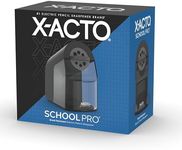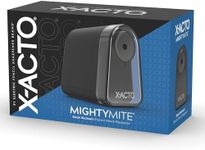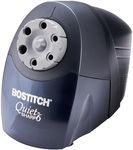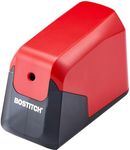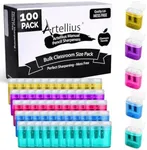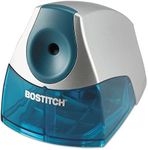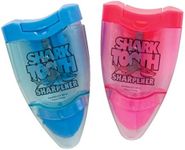Buying Guide for the Best Color Pencil Sharpeners
Choosing the right color pencil sharpener can make a significant difference in your drawing or coloring experience. A good sharpener will keep your pencils in optimal condition, ensuring smooth and precise lines. When selecting a sharpener, consider the type of pencils you use, the sharpener's design, and how often you need to sharpen your pencils. Here are some key specifications to help you make an informed decision.Type of SharpenerThere are two main types of sharpeners: manual and electric. Manual sharpeners are portable and easy to use anywhere, making them ideal for on-the-go artists. They come in handheld or crank-operated designs. Electric sharpeners, on the other hand, are more efficient and can quickly sharpen multiple pencils, which is great for frequent use or classroom settings. Choose a manual sharpener if you need portability and simplicity, or an electric one if you prioritize speed and convenience.
Blade QualityThe quality of the blade in a sharpener determines how well it sharpens your pencils and how long it lasts. High-quality blades, often made from stainless steel, provide a clean and precise cut, reducing the risk of breaking the pencil lead. Lower quality blades may dull quickly and cause uneven sharpening. If you use your sharpener frequently or work with expensive pencils, investing in a sharpener with a high-quality blade is essential.
Sharpening AngleThe sharpening angle affects the point of your pencil. A narrow angle creates a fine, sharp point, ideal for detailed work, while a wider angle produces a more durable point, suitable for broader strokes and coloring. Some sharpeners offer adjustable angles, giving you flexibility depending on your needs. Consider the type of work you do most often: detailed artists may prefer a sharp point, while those who do a lot of coloring might opt for a more robust point.
Shavings ContainerA shavings container collects the pencil shavings, keeping your workspace clean. Some sharpeners have small, detachable containers, while others have larger, built-in ones. If you often work in different locations or need to sharpen many pencils at once, a larger container can be more convenient as it requires less frequent emptying. For occasional use or travel, a smaller container might be sufficient.
Compatibility with Pencil SizesNot all sharpeners can accommodate every pencil size. Some are designed for standard-sized pencils, while others can handle a range of sizes, including jumbo or triangular pencils. If you use a variety of pencil types, look for a sharpener with multiple size options or adjustable settings. This ensures that all your pencils can be sharpened effectively without damaging them.
Durability and Build QualityThe durability and build quality of a sharpener determine how long it will last and how well it will perform over time. Sharpeners made from sturdy materials like metal or high-quality plastic are more likely to withstand regular use. If you need a sharpener for heavy-duty use, such as in a classroom or professional setting, prioritize durability to avoid frequent replacements. For occasional use, a less robust but still well-made sharpener may suffice.
